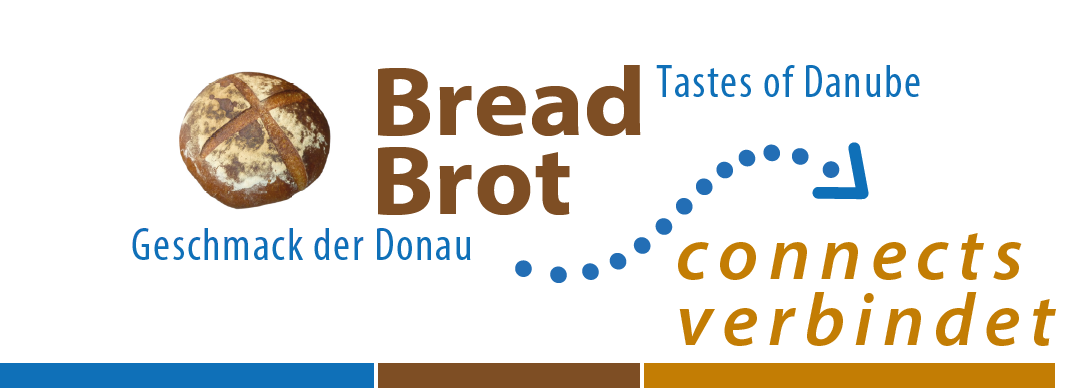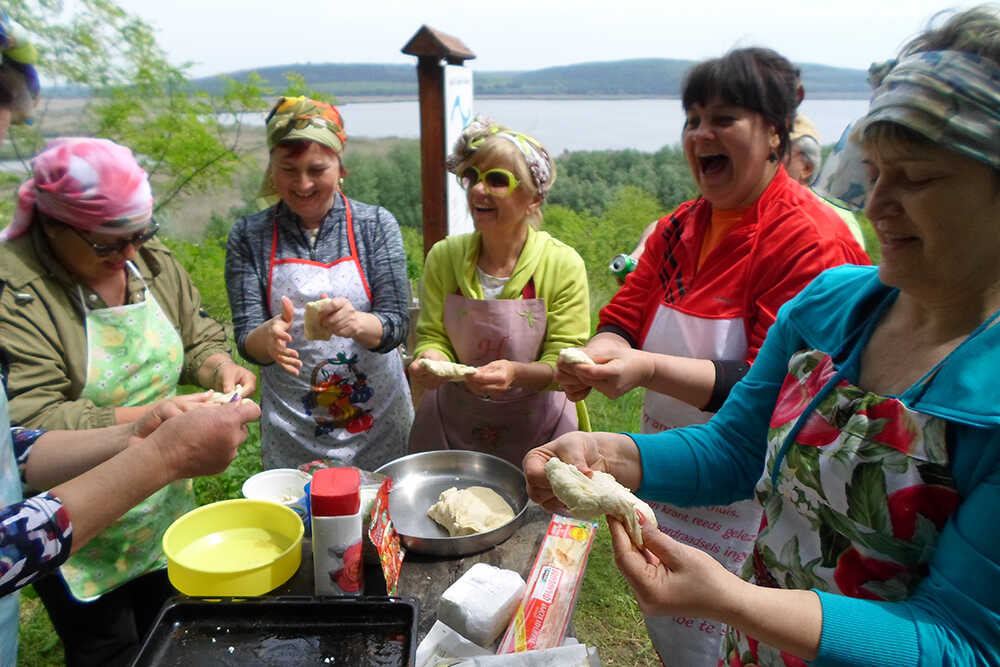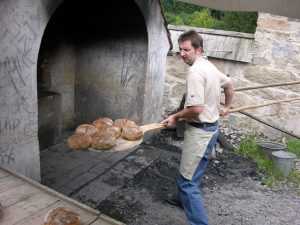Danube-networkers Brigitte and Dr. Wolfgang Doster visited and interviewed Mrs Christa Seitz, baking woman from Ettlenschieß in Alb-Donau region on June 9th 2017. They even brought their own dough for baking bread.
Hello Mrs Seitz, thanks for having us and giving us an insight into a day of baking. What is special about the baking house in Ettlenschieß?
There are about 500 people living in Ettlenschieß and 70 families are baking in the baking house on a regular basis.
That is remarkable. Why is that?
In 1878 the commune of Ettlenschieß pledged to always provide wood and employ a baking woman or man. For each bread that is baked a small amount of money is given to the commune, they settle with the families twice a year.
1878 – seems like your baking house has a long tradition.
Yes, in 1835 the commune was told by the administration of the city of Ulm to build a baking house. It took a long time to find a suitable location and they had very little money. In 1878 the time had come, they were funded by the city of Ulm with 2000 Mark and Johannes Maurer became the first baker of the village. He was told to bake every day, but only if at least 20 pieces of bread were registered for baking; otherwise he was not allowed to bake. So in 1878 the baking house was ready to go, thus we have been baking for 140 years.
How is it organized nowadays?
I’m heating the oven three times a week, twice each day. All that has to be organized very well. I have a list of people who bake and what amount of bread they want to bake. They are to inform me whenever that amount changes. People know when the baking takes place and put their bowls with dough and a little note on top in the baking house. The number of notes on the dough tells us how many loafs of bread are to be formed.
What happens to the dough in the bowls?
We are three women who take care of the dough and forming the loafs of bread. We are a well adjusted team. We look at the notes and form the loafs, everything is happening pretty fast.
How long does it take for the breads to finish baking?
At the beginning the oven is about 300° Celsius. When the maximum of 32 loafs is put into the oven the temperature goes down and it takes about 1:15 hours to finish baking. From time to time I look through a little peep hole into the oven to check on the breads.
What happens to the bread when you take it out of the oven?
I take it out with a long special slide bar. Then I brush it with water for a crunchy crust and put it in the right bowl. Over time I’ve gotten to know every one’s bowl without any sign. During the day people come and take their breads, e.g. when the come home after work.
That seems to be perfectly organized. Even working people can bake at your baking house. When do you start your baking day?
I’m starting the first fire at 5:30 am. The second heat starts at 9:30 am. Every week on Tuesdays, Thursdays and Fridays.
I’m seeing logs of wood of about 1m in length standing around. Do need those for heating the oven?
Yes, it takes about 32 pieces. I take them from the barn nearby. Every august the young confirmands from the village fill the barn with wood, thus the village provides about 25 cubic meters of beech wood.
For how long have you been baking?
I have been a baking woman for 16 years now and I’m enjoying it a lot. Of course I had to learn a lot in the beginning, but I have become pretty good at it.
How many loafs of bread have you baked until now?
Since the commune is calculating according to my lists I can give you a fairly exact number. In the past 16 years I have baked about 5000 loafs of bread.
With 49 years you are a rather young baking woman. What are your plans for the future?
I’m planning on being a baking woman for many years to come. It is great to be in contact with so many people from the village, baking their bread and therefore knowing to be a part of providing freshly baked bread. I also love baking for festivities, especially when groups of pupils or kindergarteners visit. They are often amazed how they bread they love so much is made.
What happens when you get sick or take some time off for holidays?
I’m pretty healthy, but taking time off for a holiday is kind of complicated. I inform the miller in Lonsee – who provides flour for most of the local families – and the baker in Lonsee, a village nearby. They bake more bread for the time that I’m away.
Mrs Seitz, thank you so much for this interview and for letting us bake bread with you. We wish you all the best for your job as baking woman and plan on bringing again our dough for baking some time!



